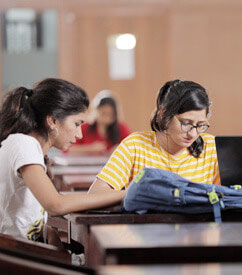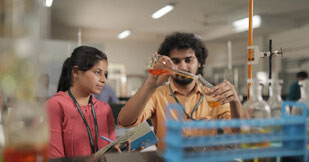From the chronicles of the glorious Vedic Bharat to the present-day India, the tradition of education for the younger populace has weathered the storms of the colonial era and sustained to evolve and thrive in the post-colonial era. After the demise of the colonial era, India emerged as an independent nation and brought into inception its first educational policy in the year 1968. It was followed up with a reconstruction later in 1986. Now, precisely in 2020, when the New Educational Policy recommendations have taken shape after a gap of 34 years, it was in fact an eye opener to a bigger gap in our education system. Nevertheless, let us seek solace in ‘better late than never’.
Though NEP-2020 is multi-pronged, we may review some of the salient features such as universalization of education, structural change in the curriculum up to the secondary education, considering art and science education at par and undergraduate education in a multi-disciplinary perspective with flexible curricular offerings along with multiple entries and exit points.
When NEP-2020 aims at universalization of education from pre-school to secondary level by 2030, lots of questions pop up which need convincing answers. Does our country possess the necessary commitment to provide this education free of cost or at least at a subsidized cost to the almost two crore children to bring them to the mainstream within the next 10-15 years to meet a GER of 100%? Most of the developed countries do this. If yes, can we accomplish it without any disparity? Will there be only one board throughout the country with a unique curricular model? Will such a model meet the expectations of all the sects of the population? Will this be implemented with the state/central government taking a lead, or in the public-private participation, or by the private educators? While the features envisaged in the policy recommendations are extremely quality-oriented, we must evaluate the efficacy of its implementation.
Changing the curricular structure from 10+2 to 5+3+3+4 will be meaningful and effective only if we decide on what to teach and how to learn. I feel that methods of imparting knowledge to 21st-century learners need to be changed compared to the previous century. All these while we focus on teaching fundamentals of any subject with the rationale that it will help them to build on such knowledge. So, Indian students even in their tertiary level of education are assumed to be strong in their basic knowledge. However, beyond the memorizing and understanding level, many of them are unable to process their knowledge as our education system never focussed on the application of knowledge. When it comes to professional education, the consequences become so bitter that the learners despite their effort, time and money become unemployable and unenterprising! This does not mean that the teaching community is not equipped. What they need to exhibit is a shift in their mindset to embrace the changes and slowly make transitions in their course delivery.
So, what shall we do? I very often interact with the 21st-century youths who have just started their career to find how better educational institutions may transform their teaching/learning strategy. As categorically pointed out by them, since knowledge about anything on earth and beyond is very easily available on digital media, where the teaching should begin is on the application level. They look for a top-down approach. For example, when I am asked to prepare an article, it is my responsibility to gather the prerequisite knowledge and tools before my thought process which enables me to accomplish it. Thus, the ignition should start with a problem statement and teachers need to be mentors to the learners in their exploratory journey towards finding solutions. This is the way they learn to think first and further think out of the box. So, tertiary level professional program curricula must be revamped in such a way that utmost emphasis is on the development of problem-solving skills.
No hard separations between arts and sciences sounds interesting. Globally, post-secondary education is viewed as a ticket to higher mobility and socio-economic status. If there is a divide on the status, dignity, and economic prospects of jobs an Arts graduate secures in comparison with that of a science graduate, how are we going to change the mindset of the people? Nowadays an individual chooses a stream of study primarily foreseeing the prospects rather than following the passion. Eventually, the task becomes unbearable for many of them that they lose focus in their career and turn out to be demotivated.
The policy also envisions broad-based, multidisciplinary, holistic undergraduate education with flexible curricula, creative combinations of subjects, integration of vocational education and multiple entries and exit points with appropriate certification. This will be a major gamechanger if implemented diligently. In the context of higher education in engineering and technology, the demarcation of various disciplines is fading away very fast and any product/service at the implementation level demands knowledge and skillsets in interdisciplinary domains. Given this trend, multidisciplinary education with a good curricular bandwidth will bring out a holistically shaped individual capable of facing challenges, the rest of the century has in store for them. Even though multiple entry points exist in Indian technical education, it may be experimented for other streams also. Multiple exit points are also a very good option in vocational and professional programs wherein learners according to their calibre and motivation may pursue certificate, diploma, or degree program in their chosen field.
In conclusion, the success of the implementation of NEP-2020 is in the hands of responsible stakeholders and indeed it requires a lot of dedication and determination.







